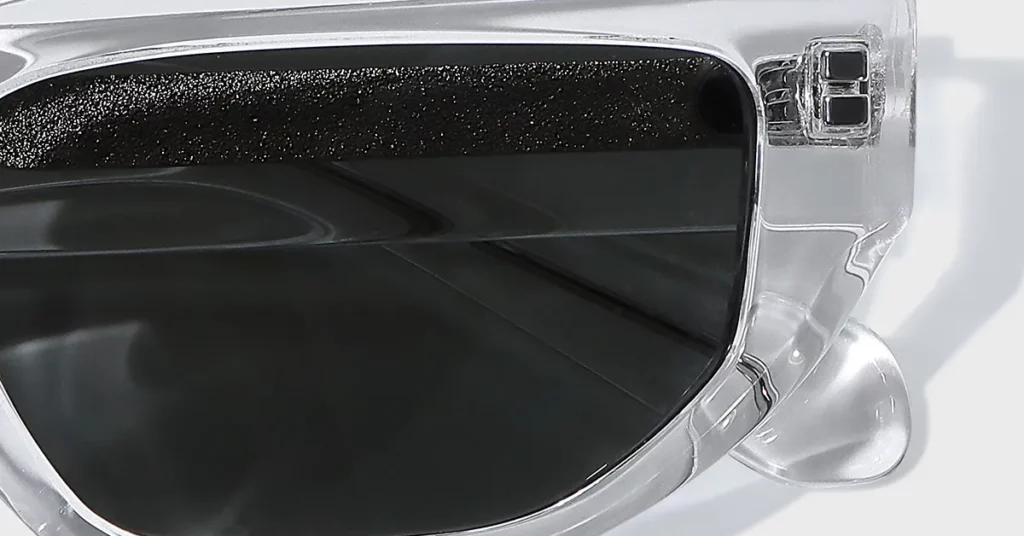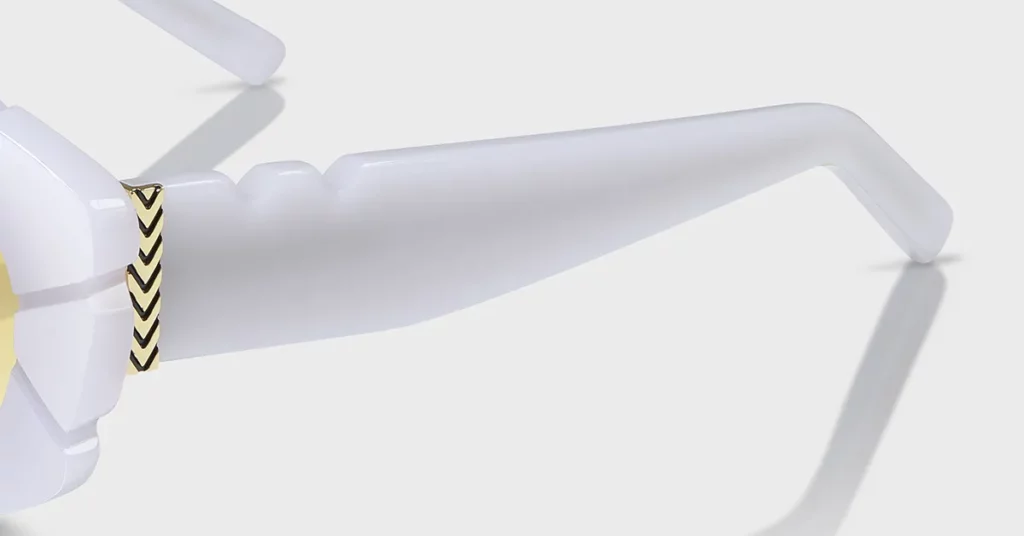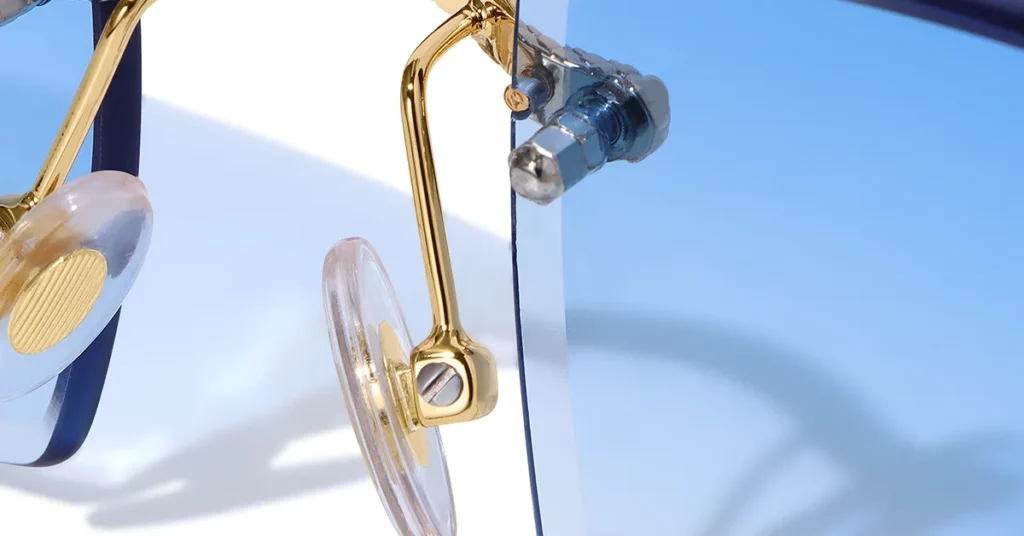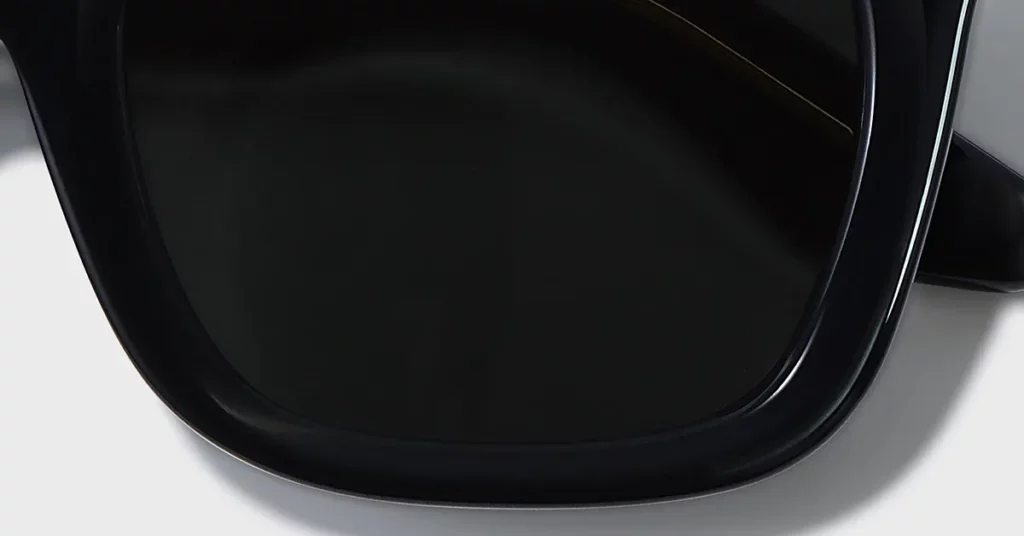Technical Deep Dive: Bio-Acetate vs. Recycled Acetate vs. TR90 for Eco-Conscious Brands
The best material depends on your brand’s specific goals. Bio-acetate offers a premium, biodegradable story with 65% bio-content. Recycled acetate provides a circular economy narrative with 97% certified recycled content. TR90, a petroleum-based polymer, delivers superior durability and a “buy-it-for-life” sustainability angle, making it ideal for performance-focused brands. Each material targets a distinct consumer segment and has unique manufacturing requirements.
Why Your Material Choice Defines Your Eco-Identity
Your material selection is not a footnote; it is the primary signal of your environmental commitment to a market that scrutinizes sustainability claims. This means you must select a material that aligns with your core brand story and attracts your specific target consumer. Each option—biodegradable, circular, or high-performance—positions your brand on a different part of the eco-conscious spectrum.
Deconstructing the Narrative
Bio-acetate enables a biodegradable narrative, as its renewable wood pulp and cotton fibers decompose under proper conditions per ISO 14855-2 standards. This positioning appeals directly to consumers who prioritize end-of-life impact and natural material origins, justifying a premium price.
Recycled acetate supports a circular economy story by diverting manufacturing scrap from landfills and reducing demand for virgin materials. Because it requires ISCC PLUS certification for supply chain traceability, it provides a verifiable claim that resonates powerfully with waste-conscious consumers.
TR90 frames its sustainability argument through durability and longevity. This Swiss-engineered thermoplastic offers exceptional impact resistance and flexibility. This means you can position it as a “buy-it-for-life” product, which directly translates to a powerful sustainability argument based on reduced consumption, despite its petroleum origins.

Aligning Material with Target Audience
The luxury fashion market demands the premium feel and rich aesthetics of bio-acetate. Its cellulose base provides a color depth and tactile quality that plastics cannot replicate, which directly translates to the perceived value that justifies a higher price point. Mazzucchelli bio-acetate, with 65% bio-content, provides the authentic credentials this segment expects.
The circular economy narrative of recycled acetate appeals to a growing segment of waste-conscious consumers. The material contains 97% recycled content, with only 3% virgin material for colorants. Critical Warning: You must demand ISCC PLUS certification across the entire supply chain. Without it, your sustainability claims are indefensible and expose your brand to accusations of greenwashing.
The performance and lifestyle angle makes TR90 the clear choice for sports or active-use brands. Its exceptional flexibility and impact resistance create sustainability through a longer product lifecycle. This means fewer replacements are needed, which directly translates to a lower long-term environmental footprint and a strong value proposition for consumers who demand durability.

The Definitive Head-to-Head Comparison
Your material decision must be based on objective data. You must analyze the core technical, performance, and aesthetic trade-offs between these three options to align your product with your brand promise and your production budget.
| Attribute | Bio-Acetate | Recycled Acetate | TR90 |
| Sustainability Credential | 65% bio-content (ASTM D6866); Biodegradable (ISO 14855). | 97% recycled content (ISCC PLUS or GRS cert.). | Durability/Longevity (“Buy-it-for-life”). |
| Material Origin | Renewable wood & cotton pulp. | Post-industrial manufacturing scrap. | Petroleum-based thermoplastic polyamide. |
| Durability & Resilience | Good, but potentially brittle; heat sensitive above 60°C. | Similar to virgin acetate; properties can vary. | Excellent impact and temperature resistance (-40°C to +85°C). |
| Flexibility & Weight | Rigid structure requires heat for adjustment; substantial, premium feel. | Similar rigidity and weight to virgin acetate. | Highly flexible; 40% lighter than acetate for featherlight comfort. |
| Hypoallergenic Properties | Yes, derived from natural cotton. | Yes, based on standard acetate. | Yes, purified polymer is skin-safe. |
| Aesthetic: Color & Depth | Unmatched richness from layered, CNC-milled blocks. | Good, but color consistency can be a challenge. | Limited to solid colors or sprayed finishes from injection molding. |
| Aesthetic: Finish & Feel | Capable of a high-gloss, premium polished finish. | Similar polish potential to virgin acetate. | Inherent matte, rubber-like texture; requires coating for gloss. |
| Design Potential | Nearly unlimited; ideal for intricate, artisanal shapes. | Similar to virgin acetate, but some limitations exist. | Best for streamlined, modern forms; complex molds required. |
Pro Tips: The rigidity of acetate is not a weakness but a requirement for optical precision. Opticians rely on this property to heat-set frames for a perfect prescription lens fit. TR90’s flexibility, while a benefit for comfort, makes it unsuitable for complex optical adjustments that require a stable, rigid chassis.

The B2B Manufacturing Playbook
Translating your material choice into a profitable, high-quality product requires rigorous supplier vetting and a deep understanding of production logistics. Your success depends on your ability to manage costs, control quality, and mitigate supply chain risk.
Vetting Supplier Technical Expertise
For Bio-Acetate: You must verify supplier certification for ISCC PLUS and inspect their curing facilities. Improper curing leads to frame distortion. Demand evidence of 4-6 week curing protocols in climate-controlled environments. Assess their CNC machining capabilities, including dust collection and specialized tooling.
For Recycled Acetate: Examine ISCC PLUS certification validity and audit schedules. You must evaluate their color-matching capabilities, as inconsistencies can ruin production batches. Best Practice: Establish binding quality standards for tensile strength and visual defects before authorizing production.
For TR90: Inspect injection molding equipment, including clamping force and temperature control systems. Quality TR90 demands high-precision molds with consistent cooling channels. Demand defect rate data and records of their corrective action procedures to assess their process control.

Analyzing Total Cost of Ownership (TCO)
Bio-Acetate commands a 25-40% cost premium over standard acetate. You must factor in the costs of extended curing times, climate-controlled warehousing, and certification compliance, which can add 5-8% to total production costs but are necessary to justify your premium pricing.
Recycled Acetate TCO is impacted by certification fees ($5,000-$15,000 per facility annually) and process complexity. Key Metric: Expect first-pass yield rates of 82-85% for recycled acetate versus 92-95% for virgin acetate. This lower yield directly impacts your final unit cost.
TR90 requires a significant upfront investment in high-precision molds, costing $25,000-$100,000. This investment is amortized over your production run. The Bottom Line: TR90 achieves cost-effectiveness at volumes over 10,000 units, while acetate remains the financially superior choice for lower-volume, premium collections.
Supply Chain and Quality Control
You must establish a legally binding technical pack that includes material certifications, dimensional tolerances, and quality acceptance criteria with defined penalties. For traceability, ISCC PLUS materials require complete chain-of-custody records. For quality control, an AQL of 2.5 for cosmetic defects and 1.0 for functional failures is the industry standard.
Critical Warning: Unverified sustainability claims expose your brand to greenwashing accusations and regulatory action under frameworks like the EU Green Claims Directive. The investment in a certified supply chain is not a cost—it is insurance against catastrophic brand damage that far exceeds the 10-15% premium for a compliant partner.

Conclusion
The optimal material is not an absolute; it is a strategic decision that must align with your brand narrative, target customer, and production model. Bio-acetate delivers a premium, biodegradable story for luxury. Recycled acetate offers a compelling circular economy credential. TR90 provides durability-based sustainability for performance markets. Your success hinges on partnering with an expert manufacturer like Kssmi that can provide the technical mastery, certified supply chain, and quality assurance to execute your vision flawlessly.
Frequently Asked Questions
1. What specific ISO certifications validate biodegradability for bio-acetate?
You must request ISO 14855-2 test results, which prove 90% conversion to CO2 within 180 days. Also, demand ASTM D6866 certification to verify the exact bio-content percentage.
2. How does recycled acetate’s color fastness compare to virgin acetate?
Recycled acetate can show 10-15% faster color degradation under UV exposure because of material inconsistencies. Virgin and bio-acetate offer superior color stability due to controlled feedstock and UV stabilizers.
3. For sportswear, what are the key trade-offs between TR90 and bio-polymers?
TR90 offers superior impact resistance and a wider operational temperature range (-40°C to +85°C). While bio-based polymers have a better origin story, they cannot match the proven durability of TR90, which is the priority for performance applications.
4. What are the typical tooling investment costs for TR90 vs. acetate?
A TR90 injection mold costs between $25,000-$100,000 with a lifespan of over 500,000 units. CNC programming for an acetate design costs just $2,000-$5,000. TR90 is for high-volume scale; acetate is for low-volume premium.
5. What are the “hidden” manufacturing costs for bio-acetate frames?
The primary hidden costs are for extended curing facilities, climate control systems for storage, ISCC PLUS certification fees, and managing a higher defect rate that requires rework. These factors can add 30-40% to the base material cost.